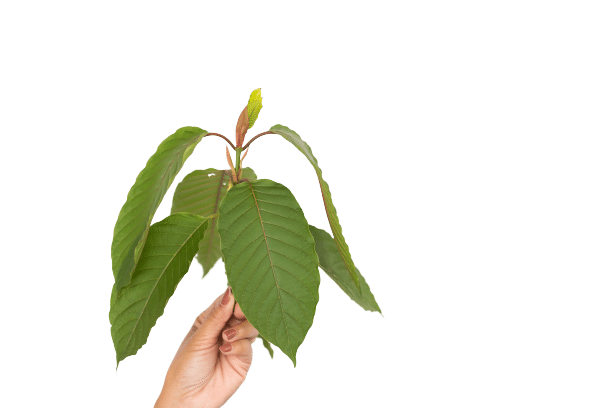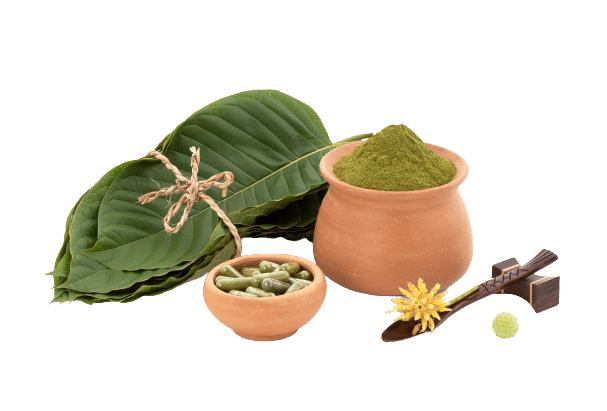The natives of Southeast Asia have treasured the kratom tree for decades. It’s highly favored for its numerous medicinal benefits.
Indonesia is the top exporter of kratom, and many products can be traced back to the country. Its exotic location is the perfect environment to cultivate potent kratom due to the mineral-dense soil and favorable weather.
Despite this, Indonesia is looking at outlawing kratom, including its harvest and export. Why, and what does that mean for the rest of us?
Kratom Legality In Indonesia & Elsewhere
Surprisingly enough, in these Southeast Asian countries where kratom is natively grown, legality is relatively clouded.
As of right now, kratom is legal in Indonesia. However, the government has announced that kratom will be banned in 2024. However, it’s clear that other Indonesian industries at play strongly oppose the plan.
The National Narcotics Agency (also known as the BNN) is the Indonesian equivalent of the United States Drug Enforcement Agency, or DEA. The agency has taken an extremely staunch position in regards to kratom. They are the main political force that is pushing for the kratom ban.
Others claim the United States FDA is also at play in pushing the ban. After all, many countries, including the U.S., are trying to ban kratom.
However, the FDA addressed the allegations in a few comments to Inverse. The FDA stated that they “inquired to understand the current status of kratom under Indonesian Law.” They added the FDA “…has not advocated either formally or informally about a change in the law in Indonesia or any other country relative to kratom.”
This suggests BNN is trying to get kratom out of the country, but why?
After all, kratom contributes massively to the Indonesian economy as Indonesia produces around 95% of the world’s kratom. Most kratom sold through online vendors can be linked to farms in Sumatra, Bali, and a few other locations within Indonesia.
The WHO, Kratom, & Future Legislation
The World Health Organization (WHO) heavily influences many countries’ legislation regarding medications and drugs. It recently reviewed kratom and declared it safe, but will this make other countries withdraw their attacks on the plant?
We hope the WHO’s findings will sway public and government opinion in the right direction.
Can I Buy Kratom In Indonesia?
Yes, you can buy kratom in Indonesia for now.
You can find plenty of vendors scattered around Indonesia since kratom is legal. You’ll also get some of the best kratom in the world that’s fresh and close to the source. However, this may not last long as the Indonesian government has planned to ban the botanical in 2024. They’ve given the ban a few years to allow farmers to find new crops to grow, harvest, and sell.
Being one of the largest suppliers of kratom on the globe, banning kratom in this country will be detrimental to the industry. Criminalizing the plant will cause massive collapse, drastically disrupt the supply, and dramatically restrict consumers’ access to kratom products.
For the sake of the global kratom market, hopefully, these other Indonesian industries will speak up and try to overturn the ban before it’s too late. Unfortunately, since so much kratom comes from this country, the industry will not be able to survive (or recover) if Indonesia bans the plant.
Consumers across the map will suffer and not be able to obtain the kratom products they need if Indonesia does ban kratom once 2024 comes around.

Why Is Kratom Banned In Other Countries?
Kratom is not banned in Indonesia yet, but it might be in a couple of years. If no one challenges their proposal to ban kratom, the plan will proceed, and the plant will no longer be legal. This will impact thousands of people using this beneficial botanical medicinally, ruining the industry.
Strangely, a kratom ban in Indonesia means a kratom ban for all of us. Well, maybe not a ban, but a drought for sure. A bad one. Indonesia supplies the majority of the world’s kratom. If they’re no longer permitted to grow, harvest, export, sell, trade, and process, everyone who enjoys kratom products could be impacted.
There are a couple of reasons why so many countries oppose using kratom.
One of the first is the plant’s psychoactive properties. Any substance that can alter your state of mind and make you feel differently will spark attention among lawmakers.
Safety and addiction are other concerning issues. Kratom interacts with opioid receptors like opioids do, causing some people to question its safety. However, kratom is not an opioid and is nowhere near as dangerous or addictive as them.
Lastly, many suggest that the government is trying to prevent the pharmaceutical industry from bleeding out metaphorically. Natural, effective, and safe alternatives to prescription painkillers and opioids will cause a significant loss in revenue for these manufacturers. This may be enough of a push to keep lawmakers in favor of banning kratom.
Kratom Use: A Quick History
Kratom has been used for generations in Southeast Asia as a traditional herbal remedy for many ailments. It effectively manages physical discomfort and pain, fatigue, diarrhea, restlessness, insomnia, stress, etc.
Kratom contains certain compounds that interact with opioid (and other) receptors in the brain. Two of the main alkaloids, mitragynine, and 7-a-hydroxymitragynine, interact with these receptors resulting in sedation, decreased physical pain, euphoria, and pleasure. This is especially true when users consume large amounts of the plant.
Natives have long used the plant as an energy booster, household remedy, and in religious ceremonies. Kratom was commonly offered as a gift to a god or spirit for fulfilling desires.
Kratom was first introduced to the west in 1839 when a botanist discovered its existence. Peter Willem Korthals named the tree Stephegyne Speciosa. It underwent numerous changes over the years until a British surgeon named Geroge Darby Haviland settled on “Mitragyna speciosa” in 1859.
While a botanist discovered kratom in the 1800s, it didn’t become popular in the U.S. until the 1990s. This was when many people were trying to find something safer with fewer side effects to treat their pain. Opioids and prescription painkillers are still causing more problems than they’re solving, and many individuals take matters into their own hands and turn to kratom to control their issues.
Kratom can provide a similar sensation to opioids in large doses and more uplifting and energizing effects in small quantities. However, this natural remedy does not pose the same health risks, dangers, and consequences that opioids do.
Kratom can be used to manage chronic pain, which is one of the most popular reasons people turn to kratom for a helping hand. Individuals have also successfully used kratom to help control their withdrawal symptoms after quitting opioids.
One study observed the self-treatment of withdrawal through ingesting kratom [1]. The research indicated that mitragynine might be able to provide similar effects that could ease opioid withdrawal symptoms and blunt cravings.
Over the years, we have been able to channel kratom’s true abilities. We’ve unlocked more of its potential, and it’s transforming into a groundbreaking medicinal botanical.
Studies have even shown a reduction of PTSD symptoms in certain individuals using kratom [2]. Another study found that the plant could potentially be a tool to reduce self-harm in individuals struggling with mental health conditions [3]. It’s truly phenomenal, and more studies must be conducted so we can discover more about this particularly special botanical.

Known Side Effects Of Kratom
Experiencing side effects after ingesting kratom is possible but is typically unlikely in moderate users. New users and those who abuse kratom are the two groups that are at the highest risk of experiencing side effects.
Remember that mixing kratom with different substances, like alcohol or other drugs, can cause severe side effects. This is something you should never do.
The most common known side effects of kratom are as follows:
- Anxiety and paranoia
- Dizziness
- Extreme fatigue, lethargy, and sedation
- Inability to focus
- Nausea and vomiting
More severe, though less common, side effects include:
- Long-term abuse causes damage to the liver
- Liver damage can cause further issues within the kidneys
- Alteration of hormone profiles
- Jaundice-like effects due to affecting the liver & increasing bilirubin levels
Kratom can be addictive, so make sure you take breaks from it and only use it when you need it.
The natives who grew up around kratom trees would often chew the leaves during the day to promote energy, vitality, and motivation. This would allow them to work longer and harder; however, this practice would lead to hyperpigmentation in the cheeks.
Kratom Deaths: Can Kratom be Fatal?
Kratom, when used responsibly, is not dangerous. Combining kratom with other substances can lead to serious health problems or even death — opioids and painkillers are especially high-risk.
Kratom itself does not possess the potential to produce lethal effects, but there are many stories about people overdosing, and kratom was found in the body afterward. However, other drugs were found to be the primary cause of death. Kratom’s presence tends to be a point of argument when discussing legalization, but it really shouldn’t be.
It’s not much different than someone who overdoses on heroin but happens to have THC in their system. Yes, there may have been THC in the body, but the heroin is more likely to be what caused the overdose.

What is the Correct Dosage for Kratom?
Newcomers to kratom will always have to start slow. Taking too large of a dose can be overwhelming. If you want to enjoy the experience, only take a small dose.
You can also microdose, which is taking less than 2 g of kratom. The effects resemble a strong buzz from a caffeinated beverage or energy drink.
Kratom doses usually fall into the following categories:
- Microdose: > 2 g
- Small dose: 2-5 g
- Medium dose: 5-8 g
- Large dose: 8-12 g
Your dose also depends on body mass, pre-existing health conditions, certain medications, whether your stomach is empty, etc. Individuals on the heavier side may need to take more to feel the effects, while individuals who weigh less won’t need nearly as much.
Taking kratom on an empty stomach will produce the strongest, fastest results. However, this may not be ideal for those with sensitive stomachs. Many individuals even enjoy mixing their kratom powder into pudding or yogurt cups.
Taking less is always the best method — you can always add more to your dose after a few hours.
You should always speak with your doctor before using kratom if you are on medications or have known health problems.
How To Take Kratom Safely
There are three things to remember to take kratom safely:
- Never mix kratom and other substances.
- Use small amounts and take breaks from it.
- Only buy kratom from reputable vendors.
Kratom interacts with many medications and drugs, so never mix them.
When you buy kratom, make sure you choose a trustworthy vendor. It’s too easy for companies to sell adulterated or weak kratom. Look for third-party test results so you can verify the potency and purity first. Shopping online through verified kratom vendors is your best bet.
Next, consider how you want to take kratom. A few ideas out there are not safe (vaping, smoking, and boofing kratom, for example).
Here are the best ways to take kratom.
The first ingestion method is simply the toss n’ wash method. This involves the users tossing loose kratom powder into their mouth and quickly washing it down with a glass of water. However, this can be extremely bitter if you don’t do it fast enough.
Secondly, you can either brew your kratom into a tea or simply mix the powder into a beverage. Kratom tea is a safe and effective way to take your dose, but the harsh flavor may be too much for some. Adding powder to drinks is another good choice. Although, you’ll want to add the powder to something with a strong flavor.
You can also purchase capsules. Capsules are great if you need an easy and discreet way to take your kratom. They offer an exact dose of kratom in each cap and are easily tossed in your backpack or purse. Capsules are usually more expensive than loose powder.
Lastly, kratom tinctures are safe and more modern than the other options. Kratom tinctures are concentrated, which means the tiny dose you’ll be taking will pack a serious punch. Tinctures usually cost more, but you don’t need to take nearly as much to get to where you need to be.

Key Takeaways: Is Kratom Legal In Indonesia?
Kratom is currently legal in Indonesia, but possibly not for long — they’ve planned to ban the plant in 2024.
If this happens, the global kratom industry will fall, as the country produces about 95% of the world’s kratom supply. When or if this happens, our access to kratom will be dramatically impacted.
This would be a potential opportunity for other regions to begin mass-cultivating kratom, although nothing could quite mimic Indonesia’s naturally prime habitat for cultivating these spectacular trees, which means the quality would not be anywhere near as good.
- Boyer, E. W., Babu, K. M., Adkins, J. E., McCurdy, C. R., & Halpern, J. H. (2008). Self‐treatment of opioid withdrawal using kratom (Mitragynia speciosa korth). Addiction, 103(6), 1048-1050.
- Veltri, C., & Grundmann, O. (2019). Current perspectives on the impact of Kratom use. Substance abuse and rehabilitation, 10, 23.
- Swogger, M. T., & Walsh, Z. (2018). Kratom use and mental health: a systematic review. Drug and Alcohol Dependence, 183, 134-140.

